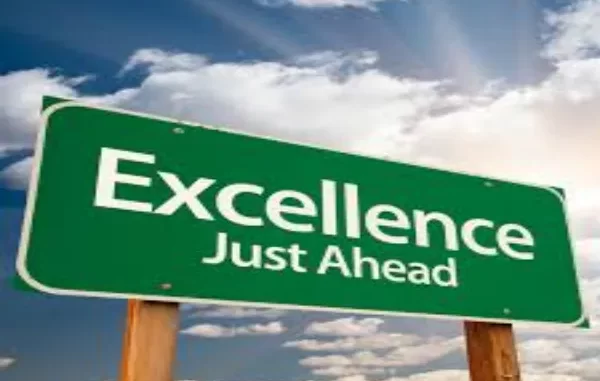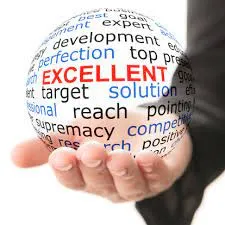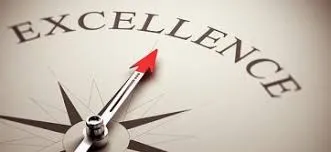
Performance excellence is an approach to achieving success in all aspects of an organization. It involves continuously improving performance in areas such as customer satisfaction, financial results, operational efficiency, and employee engagement. Through this approach, organizations strive to reach their potential in all areas of their operations and become more competitive in the marketplace.
Performance excellence can be achieved through a combination of sound strategy, effective processes, and a strong culture of continuous improvement. This introduction will provide an overview of performance excellence and the key components of a successful performance excellence program.
What is Performance Excellence?
Performance excellence isn’t simply achieving good results; it’s a holistic approach to organizational management that prioritizes continuous improvement. This integrated framework focuses on delivering ever-increasing value to both customers and stakeholders. By optimizing processes, fostering a culture of learning, and measuring results effectively, organizations striving for performance excellence aim to achieve sustainable success. This approach goes beyond short-term gains, building long-term competitive advantage and ensuring the organization remains adaptable in an ever-changing environment.
A Look Back at the Baldrige Framework’s Origins
The American post-war economic boom was a golden age of manufacturing. Fueled by surging demand for televisions, cars, and home appliances, factories hummed at full capacity. From 1950 to 1975, the U.S. witnessed a period of unparalleled economic expansion. However, this focus on quantity often came at the expense of quality. As long as production lines churned out products, customer value and quality became secondary concerns.
Meanwhile, across the Pacific, W. Edwards Deming, a pioneer of the modern quality movement, found a more receptive audience in Japan. Unheeded in the U.S., Deming’s expertise in process improvement, defect reduction, and customer focus resonated deeply with Japanese organizations. Companies like Toyota and Sony embraced these principles, propelling them to become global competitors and steadily eroding America’s market share.
By the 1980s, the American economic landscape had undergone a stark transformation. Soaring unemployment and interest rates plagued the nation. While factors like the savings and loan crisis contributed to this downturn, America’s declining focus on quality manufacturing undoubtedly played a part.
Recognizing the need for change, American leaders from both public and private sectors came together. Their aim? To guide U.S. companies towards the path of Japanese-style operational excellence. In 1987, Congress established the Malcolm Baldrige National Quality Award (named after the Secretary of Commerce who tragically passed away during his term).
Managed by the National Bureau of Standards and Technology, the program had a two-pronged approach. First, it aimed to recognize organizations demonstrating exceptional quality and performance excellence. Secondly, and more importantly, it sought to illuminate best practices and core principles that could be adopted by any organization to achieve superior results. The Baldrige Framework, as we know it today, was born from this desire to learn from past mistakes and propel American businesses towards a future focused on quality and sustainable success.
Categories for Performance Excellence
The Baldrige Performance Excellence Framework outlines seven categories that act as a roadmap for achieving organizational greatness. These categories, as described by KaiNexus Blog, encompass a holistic approach to organizational management. They begin with Leadership, emphasizing the role of leaders in setting vision, fostering a culture of excellence, and driving improvement initiatives.
Planning and Strategy delve into the organization’s ability to translate vision into actionable plans and ensure alignment with customer needs. Understanding and exceeding Customer Focus is paramount, as customer satisfaction forms the bedrock of sustainable success. Measurement & Knowledge Management equip organizations with the tools to track progress, analyze data, and leverage knowledge for continuous improvement.
Workforce development is crucial, focusing on building a highly skilled and engaged team. Process management ensures efficiency, effectiveness, and a focus on delivering value. Finally, Results provide the ultimate measure of success, encompassing customer satisfaction, operational excellence, and financial performance. By focusing on all seven categories and their interrelationships, organizations can embark on a transformational journey towards achieving true performance excellence.
Strategies for Achieving Performance Excellence
- Set Clear Goals: Clarifying expectations and setting goals is the first step to achieving performance excellence. Clear objectives should be established along with a plan for achieving them. Managers should ensure that the goals are challenging yet achievable and that they align with the organization’s mission.
- Establish Accountability: Establishing accountability helps hold everyone in the organization accountable for their performance. Managers should assign responsibilities to employees and devise measures to track progress and ensure that tasks are completed on time.
- Monitor Performance: Managers should establish a system to monitor performance and provide feedback. This helps employees understand how they can improve and make necessary adjustments.
- Reward and Recognize Excellence: Rewarding employees for their performance encourages them to strive for excellence. Managers should recognize and reward the efforts of employees who have exceeded goals and expectations.
- Encourage Collaboration: Encouraging collaboration among teams and individuals helps to foster innovation and creativity. Managers should create an atmosphere that encourages collaboration and open communication.
- Foster a Learning Environment: An environment of learning and growth is essential for performance excellence. Managers should provide opportunities for employees to develop their skills and knowledge. This could include overseeing training programs or encouraging employees to attend seminars and workshops.
- Measure Results: Managers should regularly measure the results of their efforts to ensure that the organization is achieving its goals. Results should be compared to the original objectives to assess progress and identify areas of improvement. These strategies can help managers achieve performance excellence in their organizations.
The Benefits of Performance Excellence

Performance excellence can be beneficial to organizations in a variety of ways. First, it can help an organization become more competitive. By consistently providing excellent products and services, companies can gain an edge over their competitors. This can help them gain more market share and increase profits.
Second, performance excellence can help organizations save money. By improving efficiency and productivity, organizations can reduce their costs. This can help them increase their profit margins and invest more in new products and services.
Third, performance excellence can help organizations stay ahead of the competition. By staying ahead of the competition, organizations can remain competitive in their industry. This can help them maintain their market share and stay ahead of their competitors.
Finally, performance excellence can help organizations increase customer satisfaction. By consistently delivering high-quality products and services, organizations can ensure customer satisfaction. This can help them retain customers and build loyalty.
Measuring Performance Excellence

Measuring performance excellence is an important part of business operations. It allows a company to identify areas of improvement and ensure that employees are meeting the standards of the organization. Performance excellence can be measured in several ways, such as through customer feedback, employee surveys, and performance reviews.
Customer feedback is one of the most reliable methods of measuring performance excellence. Companies can use customer surveys to gain insight into how their products and services are being received by their target audience. This feedback can be used to identify areas of improvement and ensure that customer needs are being met.
Employee surveys are another great way to measure performance excellence. These surveys can help a company identify areas of improvement in terms of employee motivation, job satisfaction, and productivity. This feedback can be used to create strategies for improving employee performance.
Measuring performance excellence is an important part of business operations. By using customer feedback, employee surveys, and performance reviews, companies can identify areas of improvement and ensure that employees are meeting the standards of the organization.
The Role of Leadership in Performance Excellence

Leadership plays an important role in performance excellence. It is the leader’s responsibility to cultivate the right environment, set a clear vision, and guide the team in the direction of success.
Leaders must create a culture that is conducive to success. This requires setting a clear vision and values that the team can strive for. Should also ensure that everyone understands the goals and strategies they have set forth. They should also ensure that everyone is given the tools and resources needed to succeed.
They should also provide guidance and support to the team. Must ensure that the team has the necessary skills and knowledge to achieve the goals they have set. Leaders should also provide encouragement and recognition for team members when they have done well. This helps to motivate the team and keep them focused.
Leadership is key to performance excellence. It is the leader’s responsibility to create the right environment, provide guidance and support, and ensure that everyone is working towards the same goal. When a leader is successful in these areas, it can lead to increased performance, improved morale, and ultimately, success.
Understanding the Role of Process Improvement in Performance Excellence
Process improvement is an important part of performance excellence. It helps businesses and other organizations identify the most effective and efficient ways of accomplishing their objectives. Process improvement helps to focus on the customer, enhance quality, reduce costs, and make processes easier to manage and control.

This involves a series of steps that identify and analyze problems, develop solutions, and monitor progress. It requires an understanding of the organization’s current processes and how they affect the organization’s performance. Process improvement involves identifying the inputs, outputs, and processes that are used to produce the desired results.
The goal of process improvement is to design processes that are more efficient and effective. This can be accomplished by using techniques such as process mapping, process analysis, and process modeling. Process mapping is a visual representation of the processes of an organization. It provides an organized view of the activities that take place in each step of the process.
Improvement efforts can lead to improved performance in many areas. These may include customer satisfaction, safety, quality, and cost reduction. Process improvement can also lead to better decision-making, faster response times, and improved communication. When done correctly, process improvement can be an effective tool for improving performance excellence.
The Link between Quality and Performance Excellence
The connection between quality and performance excellence is a long-standing debate in the business world. Quality is often seen as the key to success in any organization, while performance excellence is seen as the pinnacle of accomplishment. While both concepts are essential components of organizational success, the relationship between them is not always obvious.
Quality is often defined as the degree to which products or services meet or exceed customer expectations. Products or services must be reliable, safe, and durable. It can also refer to the ability of an organization to consistently meet or exceed customer expectations. Quality is an important factor in customer satisfaction and loyalty, as customers typically prefer products or services that meet their expectations.
Performance excellence, on the other hand, is a measure of an organization’s ability to achieve superior results. Performance excellence is typically measured in terms of financial performance, customer satisfaction, and operational efficiency. Organizations that achieve performance excellence demonstrate a strong commitment to excellence, an ability to deliver consistent results, and a focus on continuous improvement.

In conclusion, quality and performance excellence are both essential components of organizational success. Quality serves as the foundation for performance excellence, as organizations must first have the capacity to consistently deliver high-quality products and services. Ultimately, the relationship between quality and performance excellence is multifaceted and complex, but both concepts are essential for organizational success.
The Power of Innovation and Performance Excellence
The power of innovation and performance excellence is a concept that has gained popularity over the years. This concept has been widely embraced by businesses, organizations, and individuals alike as a means to improve their operations and reach their goals. The idea is simple: by focusing on innovation and performance excellence, businesses and organizations can create a culture of improvement and growth that will drive their success.
Innovation is the process of creating something new or improving upon something existing. It is about thinking outside of the box and coming up with creative solutions to problems. Innovation can lead to new products, services, processes, or ideas that can give a business or organization an edge over its competition. Performance excellence, on the other hand, is the practice of continuously striving for excellence in all aspects of business operations. It involves setting goals, measuring progress, and making adjustments to ensure that the goals are met.
The power of innovation and performance excellence is undeniable. By focusing on these two concepts, businesses and organizations can create a culture of improvement and growth that will lead to success in the long run. Individuals can also benefit from focusing on innovation and performance excellence, as it can help them become more productive and successful in their own pursuits.
Performance excellence is the result of commitment and hard work. It requires a combination of skills, knowledge, and resources to achieve success. Performance excellence is a continual process that requires ongoing assessment, evaluation, and improvement. It is important to understand that performance excellence is not only about achieving great results but also about ensuring the best possible outcomes for all stakeholders. With the right strategies and resources in place, organizations can become more successful and competitive.

Leave a Reply